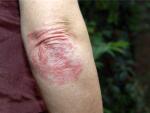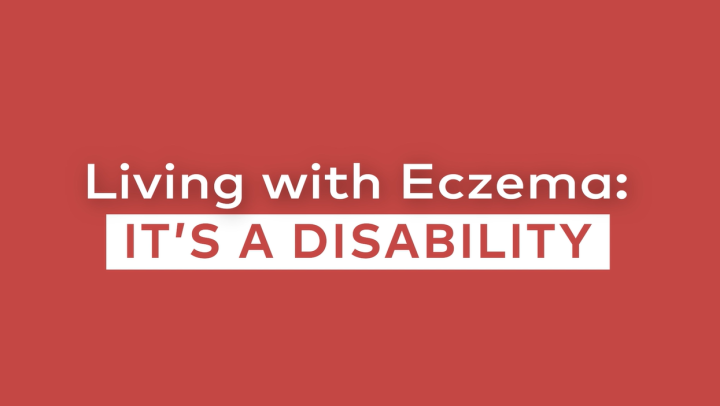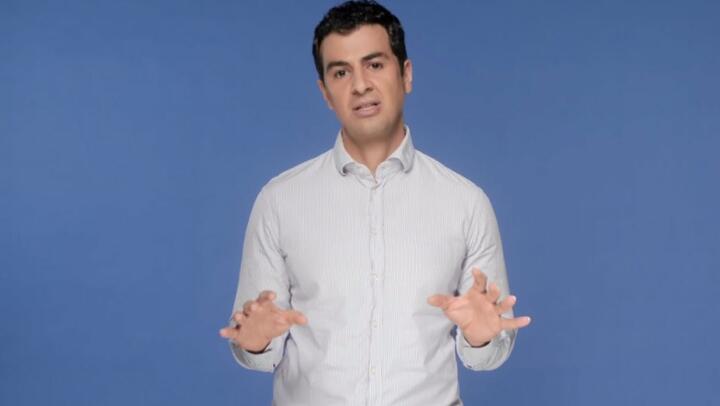This article explains tick bites, including what they look like and symptoms to watch for. It will also cover prevention tips and how to remove a tick after a bite.
What does a tick bite look like?
Ticks are small, eight-legged parasites that feed on the blood of humans and animals. They range in size between 1 millimeter (mm) to 1 centimeter (cm) long.
Most tick bites are harmless, but many tick species can carry disease-causing microorganisms.
When a tick bites, it hooks into the skin and embeds itself to draw blood. Because the tick attaches so strongly to the body, it remains on the skin and you cannot simply brush it away.
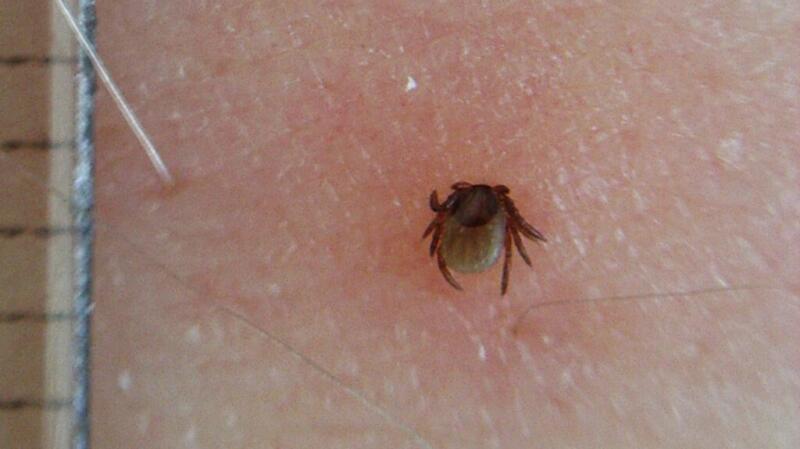
Once the tick is full, it will fall away on its own. This can take anywhere from
You may not feel the bite at first, but you may notice a small, discolored bump on your skin after a few days. The tick may still be attached to your skin.
Because ticks are so small, it may be difficult to see a tick bite. This is why it is important to check yourself for ticks after being outdoors in a wooded area or tall grass.
Ticks prefer soft and moist areas of the body,
- groin
- belly button
- scalp
- armpits
- ears
- waist
- behind the knees
What are symptoms of a tick bite?
In most cases, tick bites are not painful. Sometimes, tick bites can trigger allergic reactions, with symptoms including:
- small, hard bump
- pain or swelling
- irritation
- blisters
- itchiness
- skin rash
If a tick transmits an infection through its bite, you may experience symptoms such as:
- fever of 101ºF or 38ºC
- chills
- muscle pain
- headaches
- tiredness
Be sure to get prompt medical treatment if you have these symptoms, particularly if you find a tick bite or have recently been in a wooded or grassy area.
Tick bite rash
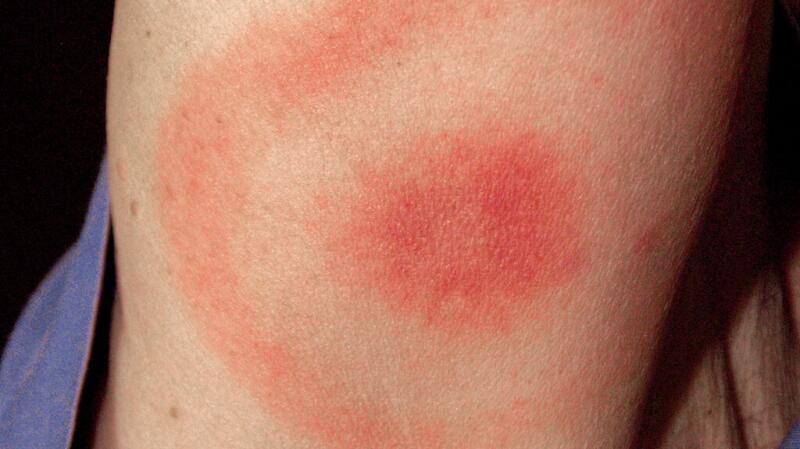
If the tick bite transmits an infection, a rash may appear at the tick bite site anywhere from a few weeks up to 3 months after the bite.
It may begin as a cluster of discolored spots and then develop into a wide, bull’s-eye patch.
Some tick bite rashes are quite prominent, but others are difficult to see.
Growing rashes may indicate Lyme disease, a bacterial infection that can spread to multiple systems in the body. Contact your doctor right away if you have a rash that spreads or does not go away.
How do you remove a tick after a bite?
If you find a tick on your body, it is important to remove it as soon as possible. This can help reduce your risk of tick-borne infection, such as Lyme disease.
How to remove a tick from your skin
The Centers for Disease Control and Prevention (CDC) lists these steps for the proper removal of a tick:
- Using a pair of tweezers or a similar tool, grasp the tick by the head.
- Pull it upward from the skin with steady pressure. Try not to squeeze, crush, or twist the tick.
- If any part of the tick remains in the skin, remove it with the tweezers.
- After the tick is off, clean the bite area thoroughly with soap and water or rubbing alcohol.
- Wash your hands with soap and water or rubbing alcohol.
- If you want to dispose of the tick, flush it down the toilet.
- If you want to show the tick to your doctor or other healthcare professional, place it in a sealed container.
The CDC also advises against using any folklore remedies — such as burning off a tick, painting it with nail polish, or applying petroleum jelly — to treat a tick bite. Quick, proper removal is the best way to prevent infection.
When to contact a doctor for a tick bite
After removal of a tick, it is important to watch the bite area for symptoms of infection. These can include:
- rash, particularly one that resembles a bull’s-eye
- rash that grows or does not go away
- fever of 101ºF or 38ºC
- chills
- fatigue
- weakness
- body aches
Contact your doctor or other healthcare professional promptly if you notice any of these symptoms. They can test for tick-borne illnesses and begin treatment if necessary.
What is the risk of Lyme disease from a tick bite?
Lyme disease results from infection by the bacterium Borrelia burgdorferi. When infected ticks bite humans, they can transmit the infection.
Lyme disease spreads through ticks primarily in the northeastern, mid-Atlantic, north-central, and Pacific coastal United States.
The CDC estimates that about
To transmit Lyme disease, a tick typically needs to be attached for 36–48 hours. This is why prompt removal of a tick greatly reduces the risk of infection.
Lyme disease symptoms
Symptoms of Lyme disease can include:
- erythema migrans rash, or a rash that forms a bull’s-eye pattern
- fever
- chills
- headache
- fatigue
- muscle
- dizziness
- shortness of breath
- joint pain
- swollen lymph nodes
Without treatment, Lyme disease can lead to complications such as:
- severe headaches
- neck stiffness
- facial palsy, which is muscle weakness on one side of the face
- arthritis
- nerve pain
- Lyme carditis, which is a rare infection of the heart by Lyme disease bacteria
- inflammation of the brain and spinal cord
Getting prompt treatment for early symptoms of Lyme disease can improve the treatment outcome and reduce your risk of complications.
Lyme disease treatment
If you test positive for Lyme disease or another tick-bite-related infection, or if your doctor suspects an infection, they may prescribe antibiotics.
The antibiotics you receive will depend on your particular symptoms. If necessary, you will continue to take the antibiotics for up to 28 days.
How can you prevent tick bites?

It is important to take protective measures when you will be outdoors, particularly in wooded or grassy areas. Steps to help prevent tick bites include:
- Treat your clothes with
0.5% permethrin Trusted Source Centers for Disease Control and Prevention (CDC) Governmental authority Go to source before going into outdoor areas. - Wear long pants and sleeves.
- Spray yourself with insect repellant containing DEET.
- Avoid areas where ticks may live, such as tall grass, brush, or wooded regions.
- Examine your clothes and body for ticks after being outdoors. Use a hand mirror for hard to see areas.
- Shower within 2 hours of coming indoors to help wash away any unattached ticks.
- Check your children, pets, and gear for ticks after being outdoors.
Other frequently asked questions
These are some other questions people often ask about tick bites. Debra Sullivan, PhD, MSN, RN, CNE, COI, reviewed the answers.
When should I worry about a tick bite?
Get prompt medical treatment for a tick bite if you have flu-like symptoms, such as fever, chills, and headache. These symptoms may indicate an infection, such as Lyme disease.
How long after a tick bite do symptoms appear?
Symptoms of a tick bite may appear within a few days or up to a month later. They may include a rash, irritation, pain, and swelling. In many cases, a tick bite may not present any symptoms.
How soon do you need antibiotics after a tick bite?
Your doctor may give you antibiotics within 72 hours of tick removal. In most cases, taking antibiotics for 2–4 weeks cures the infection.
Summary
Most tick bites are harmless, but some can transmit infections, such as Lyme disease.
Common symptoms of an infected tick bite include fever, chills, muscle pain, headaches, and tiredness.
The first line of treatment for a tick bite infection is antibiotics. Many people make a full recovery after taking antibiotics for 2–4 weeks.
To reduce your risk of a tick bite, keep away from areas where ticks may live, such as tall grass or wooded areas. Check your clothes and body for ticks after being outdoors.
Get prompt medical care if you have symptoms of a tick bite infection.





